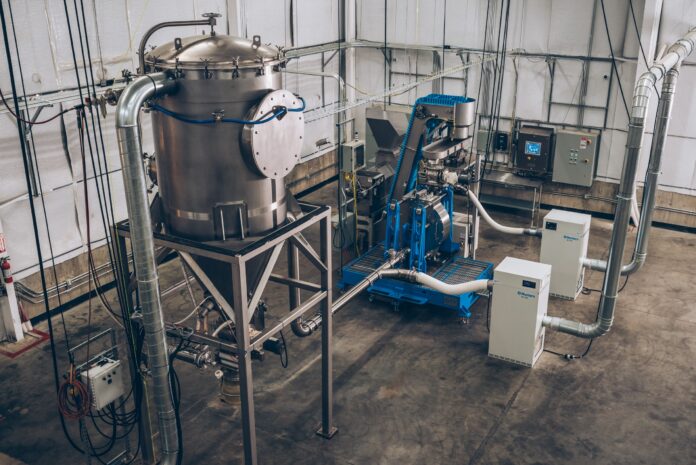
By Gary Schuler, Founder and President of GTF Technologies
Over one-third of the world’s food, or 1.3 billion tons, is wasted every year. More than 65% of that loss occurs at the production, postharvest handling, and storage phases – prior to even getting to the retailer or consumer. This waste has a huge environmental cost since each component of the supply chain releases greenhouse gases (GHG) into the atmosphere. In fact, it’s estimated that food waste is responsible for 3.3 billion tons of GHG emissions annually.
Additionally, nearly 90% of surplus in food processing are byproducts, but many of these — such as peels, pulp, and seeds — are the most nutritious part of the fruit/vegetable and are abundant in vitamins, minerals, and antioxidants. These byproducts and side streams would be valuable if converted into a form that could be resold.
A large barrier to recovering food waste is the time and cost of transporting heavy, high-moisture foods before they begin to decompose. Food stabilization onsite at the processing facility before transportation is key. Food powders weigh up to 90% less and have a shelf life of three years or more, whereas the same fresh food can have a shelf life of three days or less. If perishable food can be safely and cost-effectively converted into powder, food that was once considered “waste” can be transformed into food assets and reintroduced to the supply chain as upcycled food material. This circular process of rescuing food waste and upcycling it into food assets reduces GHG emissions while providing a financial return for food production and processing operations.
Traditional food drying technologies have been unable to cost-effectively upcycle side streams, but an innovative new technology is now available that can address many of the issues present with current processing methodology.
By reducing the footprint of drying technology so it can be placed directly onsite at food processing facilities – and even in-line with food processing equipment — transportation costs and time are minimized. Drying and milling food simultaneously is another way the new technology reduces time, cost, and square footage by eliminating redundancies resulting from two operations. In addition, converting fresh food to powder before it is transported off-site dramatically reduces its weight and volume and eliminates the urgency in its disposition.
The high energy and time requirements of traditional drying equipment, some of which use natural gas and take hours or even days, are additional obstacles to efficient food waste recovery. As fossil fuels are increasingly regulated, finding an energy efficient alternative becomes critical. A food stabilization technology that is 100% electric and converts food waste into powder in seconds saves valuable time and fossil fuels, further reducing the carbon footprint.
Ultimately, stabilizing food waste only makes sense to the food producer or processor if it helps the bottom line. By efficiently converting side streams into valuable, nutrient-dense powders, companies can create new product opportunities in markets such as food ingredients, upcycled foods, beverages, pet foods, and even bioplastics. These companies feel good about not only meeting their ESG and sustainability goals but doing so without sacrificing profitability.
 Gary Schuler is Founder and President of GTF Technologies (www.gtf-technologies.com). Mr. Schuler is passionate about creating sustainable yet profitable solutions for waste reduction. GTF designed and manufactures the RENU™ Drying & Milling System, a revolutionary technology that is poised to lead the food processing industry in efficient food waste reduction and the generation of nutrient-dense upcycled powders.
Gary Schuler is Founder and President of GTF Technologies (www.gtf-technologies.com). Mr. Schuler is passionate about creating sustainable yet profitable solutions for waste reduction. GTF designed and manufactures the RENU™ Drying & Milling System, a revolutionary technology that is poised to lead the food processing industry in efficient food waste reduction and the generation of nutrient-dense upcycled powders.









